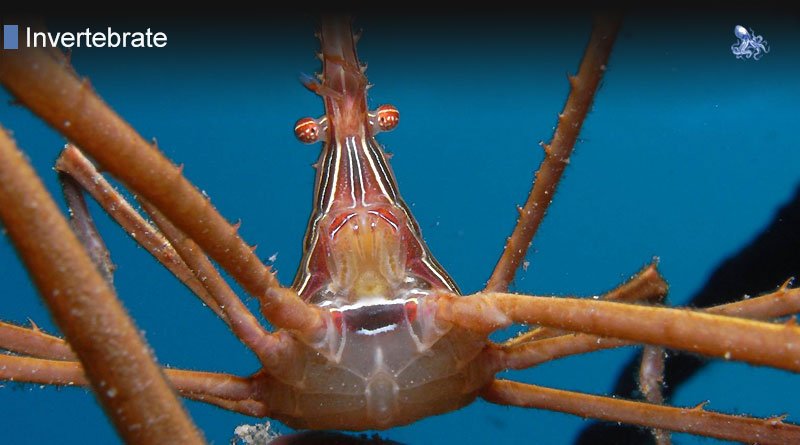Arrow Reef Crab
Arrow crabs are among the strangest-looking animals from among all reef dwellers. Living in the relatively shallow waters of coral reefs, 10-30 feet in depth, arrow crabs are among the most widespread of all invertebrates, often found in the close proximity of anemonae.
The crab has eight very thin, long legs – often as long as 10 cm – that hold a small, pointed body that is narrow in the front and wide towards the end. The carapace of the animal measures maximum 6 cm in length.
Arrow crabs have a characteristic rostrum, an extension of the upper part of their exoskeleton that is positioned in the front of the eyes. The eyes of the crabs are brown, but otherwise they feature many different color combinations. The body of the animal may be yellow or golden, striped in black or brown on the dorsal part of the body. Some species display spectacular iridescent blue stripes. The legs are also colored, yellow and red-legged species being the most widespread, with claws colored in violet or dark blue.
These little alien-looking creatures are nocturnal, being active mostly at night. During the day, the crabs hide among sponges or sea fans. These crabs, just like all others, are omnivores, but they prefer to eat meat, meaning that their staple diet consists mostly of bristle worms and feather duster worms. If they get the chance, they eat other small invertebrates, even small fish living in coral reefs as well. These crabs also have a huge appetite, spending their waking hours meticulously gnawing on something.
The crabs are also very protective of their territory. Their behavior can easily become aggressive, their aggression being directed not so much against other species than against other crabs that enter their territory. Their usual, slow and graceful movement becomes quick and brisk when they feel threatened.
During reproduction, the female crab is held by the male against his belly in order to place his packet of sperm on the female, who then carries the packet until the eggs are mature enough to hatch. The new-born crabs are rounded and transparent in the beginning and they live on the surface of the water where they feed on planktons. During the next stage of development, the larvae shed their skin to replace it with new skin. In this phase, the young arrow crabs already have legs and they start looking more like crabs.




